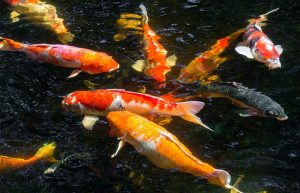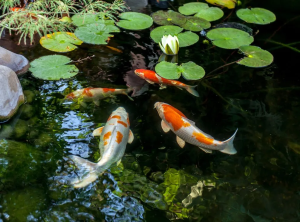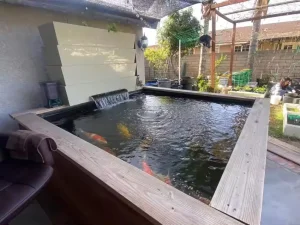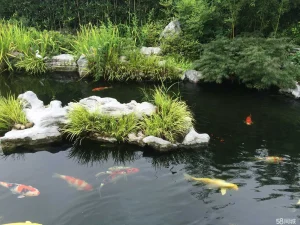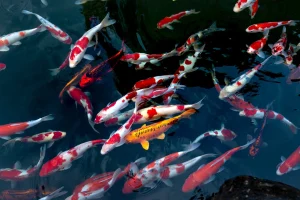As winter approaches, it is crucial for koi pond owners to take necessary steps to ensure the health and well-being of their beloved fish. The cold temperatures and freezing conditions can pose serious threats to the survival of koi, making it imperative to prepare the pond adequately. In this article, we will provide you with valuable tips and a survival guide to help you navigate through the winter season and keep your koi thriving.

1. Maintain Water Quality
Water quality is paramount for the health of koi, especially during winter when their immune systems are more vulnerable. Start by testing the water parameters such as pH, ammonia, nitrite, and nitrate levels. Adjust these levels as necessary to maintain optimal conditions. Regularly check the water temperature and ensure it remains consistent, as drastic fluctuations can be harmful to the fish.
2. Install a Pond Heater

Investing in a pond heater is a wise decision to prevent the water from freezing completely. This device will help maintain a suitable temperature for your koi throughout the winter season. Make sure to choose a heater that is appropriate for the size of your pond, as different models have varying capacities.
3. Insulate the Pond

Insulating the pond is crucial to protect your koi from extreme temperatures. One effective method is to cover the pond with a floating insulating material such as a pond net or bubble wrap. This will create an additional barrier between the water and the cold air, minimizing heat loss and preventing freezing. Ensure that the cover is securely fastened to prevent it from being blown away by strong winds.
4. Provide Adequate Oxygenation
During winter, the cold water holds less oxygen, which can be detrimental to the fish. To counteract this, it is essential to provide adequate oxygenation in the pond. Install an air pump or aerator to keep the water well oxygenated. This will not only benefit the koi but also prevent the water from becoming stagnant and developing harmful bacteria.
5. Monitor Feeding

As the temperature drops, the metabolism of koi slows down, leading to reduced appetite. Adjust the feeding schedule accordingly and avoid overfeeding, as uneaten food can decay and pollute the water. Switch to a low-protein, high-quality food specifically formulated for winter feeding. Feeding your koi small amounts multiple times a day can be more beneficial than a single large meal.
6. Prevent Predators
Winter can attract predators looking for an easy meal, so it is crucial to take measures to deter them. Install a sturdy net or wire mesh over the pond to prevent birds, raccoons, and other animals from accessing your koi. Additionally, consider adding motion-activated deterrents or installing a fence around the pond for added protection.

7. Regular Monitoring
Even with all the necessary preparations, it is essential to regularly monitor your koi pond throughout the winter season. Check the water temperature, oxygen levels, and overall condition of the fish. If any issues arise, such as signs of illness or distress, take immediate action to address the problem. Prompt intervention can make a significant difference in the survival of your koi.
By following these preparation tips and survival guide, you can ensure that your koi pond remains a safe and healthy environment for your fish during the winter months. Remember, the well-being of your koi depends on your commitment to their care. With proper planning and attention, you can enjoy the beauty of your koi pond all year round.


